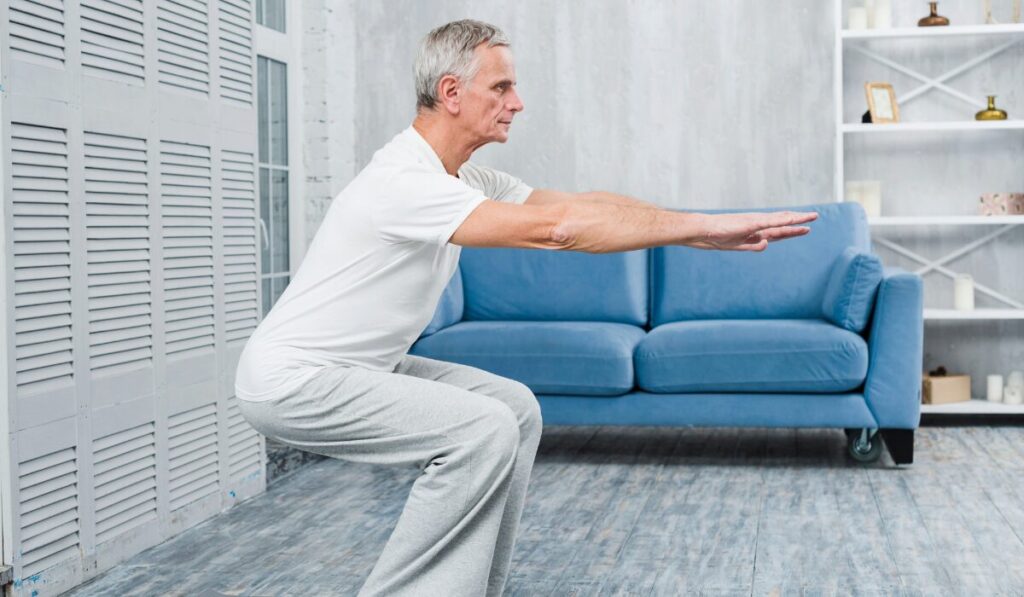As we get older, therefore, we need to be active to remain comfortable and independent, and ultimately, a strong core is the answer. Specifically, core muscles provide support for better posture, balance, and stability, and as a result, decrease back pain and the likelihood of falls. The good news? Fortunately, you don’t have to be a fitness coach. In fact, this book covers the benefits and easy, safe core workouts for older adults that accommodate real bodies and real life.
Why Core Strength Matters More as You Age
Core isn’t all about abs. In fact, your core includes muscles in your abdomen, lower back, hips, and pelvis. These muscles, collectively, give you the strength you need for everyday movements like standing up, bending, walking, or reaching into a cabinet.
Starting Core Workouts the Simple Way
The majority of individuals assume that core training involves crunches, planks, or floor exercises. For older adults, however, it is more advisable to be low-impact, functional, and safe.
Before you start:
- Consult with your physician if you have a medical condition or illness.
- Warm up for a 5-minute light walk or shoulder rolls.
- Support yourself with a chair or the wall when starting.
Let us have a look at some effective and safe core exercises created specifically for seniors.
1. Seated Knee Lifts — Gentle Activation

Moreover, the abdominal muscles are activated through this exercise without adding extra stress on your back.
How to do it:
- Sit in a stable chair facing forward with the feet firmly placed on the ground
- Slowly bring one knee up towards your chest with the back straight
- Lower and repeat on the other leg
- Do 10–12 reps on each
2. Standing Side Leg Raises — For Hip and Core Stability
This easy exercise not only strengthens the obliques and hips but also helps stabilize your sides.
How to do it:
- Stand behind a chair and hold onto the back for support
- Slowly lift one leg to the side with the leg straight
- Bring it back down and do it again
- Do 10 reps on each leg
3. Pelvic Tilts — Strengthen the Lower Core
Excellent exercise for posture and release of tension in the lower back.
How to do it:
- Lie on your back with knees bent and flat feet on the floor
- Activate your stomach muscles and slightly lift your pelvis
- Hold for 3 seconds, then release
- Repeat 10–15 times
4. Bird Dog (Modified) — Boost Balance and Core Control
The low-impact, modified version works on both core strength and coordination.
How to do it:
- Begin hands and knees (use mat for support)
- Slowly lift your right arm and left leg at the same time
- Hold for 3 seconds, then repeat on the other side
- Repeat 8–10 reps on each side
5. Marching in Place — Core and Cardio in One
This low-impact exercise both works the core and puts your heart rate moderately up.
How to:
- Stand up straight and march slowly in place
- Focus on lifting your knees and contracting your abs
- Keep going for 30–60 seconds
Consistency Over Intensity
You don’t have to perform long or strenuous workouts to gain strength. In fact, completing just 10–15 minutes of older adult core workouts, 3–4 times a week, is sufficient. As a result, you’ll begin to notice an improvement in balance, mobility, and posture.
Success tips:
- Begin small and gradually build up
- Use a mirror to verify your posture
- Hydrate and rest when necessary
- Listen to your body — no stabbing pain should ever be felt
The Long-Term Benefits of Core Training
Consequently, including core exercises in a daily routine produces obvious differences in everyday life.
You might notice:
- Improved posture when sitting or standing
- Fewer incidences of lower back pain
- Improved balance and confidence on your feet
- Easier mobility when performing activities or tasks
However, it’s not about achieving those six-pack abs — it’s about remaining mobile, independent, and safe.
Conclusion
One of the best things older adults have in combating healthy aging is, first and foremost, a stable core. By incorporating a few easy motions into your weekly regimen, you can not only straighten posture but also prevent falls and boost everyday confidence.
These core workouts for older adults are low-impact, flexible, and tailored with your long-term health in mind. Whether you’re new to this or gaining strength over time, your body will appreciate it if you invest in it.
FAQ’s
How often should older adults do core workouts?
Aim to practice 3–4 times per week for 10–15 minutes. In this case, consistency matters more than intensity.
Are core workouts safe for seniors with back pain?
Yes, gentle movements of the core, such as pelvic tilts or movement while seated, actually decrease back pain. Always check with your doctor first.
Can I do core workouts without getting on the floor?
Yes. Several effective core exercises can be performed in sitting or standing positions, particularly for older adults with mobility impairment.
What equipment do I need for these exercises?
All you need is a sturdy chair, a mat (optional), and comfortable clothes. In other words, no special gym gear is required for these beginner-friendly movements.

